HALO Elevate C18 40% Discount
Mehr lesenHALO protein columns from AMT (Advanced Material Technology) are made of core-shell material and offer 400 Å and 1000 Å pore sizes for unrestricted pore access of large proteins. With these pore sizes and core-shell technology, ultra-fast and high-resolution separations can be achieved. The particles are available with a diameter of 2.7µm and 3.4µm and with ES-C18, C4 and diphenyl modifications.
| Phase | Modification | Particle size | Pore size | Endcapping | C-content | USP | Surface area | pH range | Tmax |
| HALO Protein ES-C18 | C18 | 2.7 µm | 1000 Å | + | 1.4 %C | L1 | 15 m²/g | 1.0-8.0 | 90°Ca |
| HALO Protein C4 | C4 | 2.7 µm | 1000 Å | + | 0.6 %C | L26 | 15 m²/g | 2.0-9.0 | 90°Ca |
| HALO Protein Diphenyl | Diphenlmethyl | 2.7 µm | 1000 Å | + | N/A | L11 | 15 m²/g | 2.0-9.0 | 90°Ca |
a Low pH; b High pH
HALO 400 Å diphenyl outperforms an FPP 300 Å diphenyl column with higher resolution and 2.7 times lower back pressure. The 400 Å pores allow better access to the bound phase.
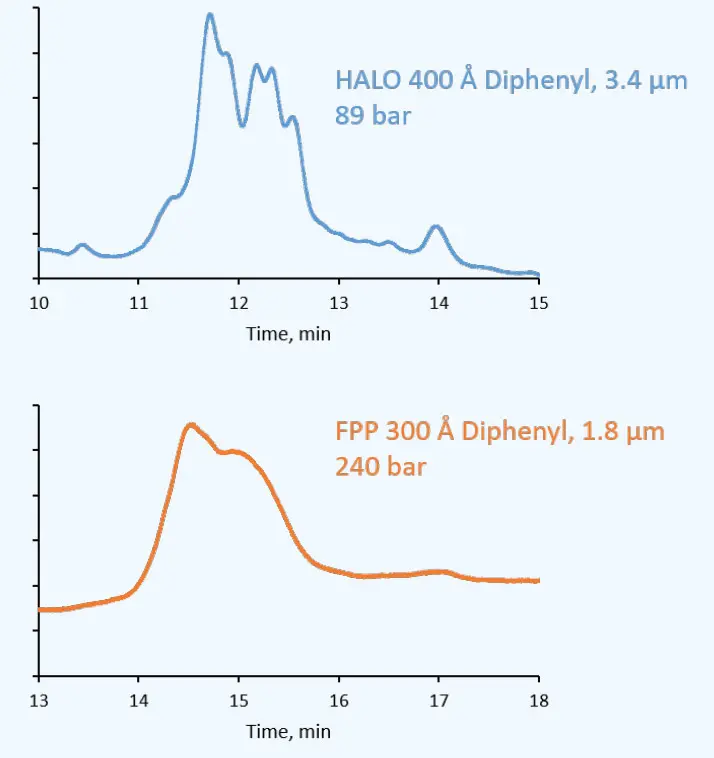
TEST CONDITIONS
Three bound phases (C4, ES-C18 and diphenyl) are now available on surface porous HALO 1000 Å particles. Each phase offers unique selectivity for mAbs, as shown in this high temperature separation of trastuzumab.
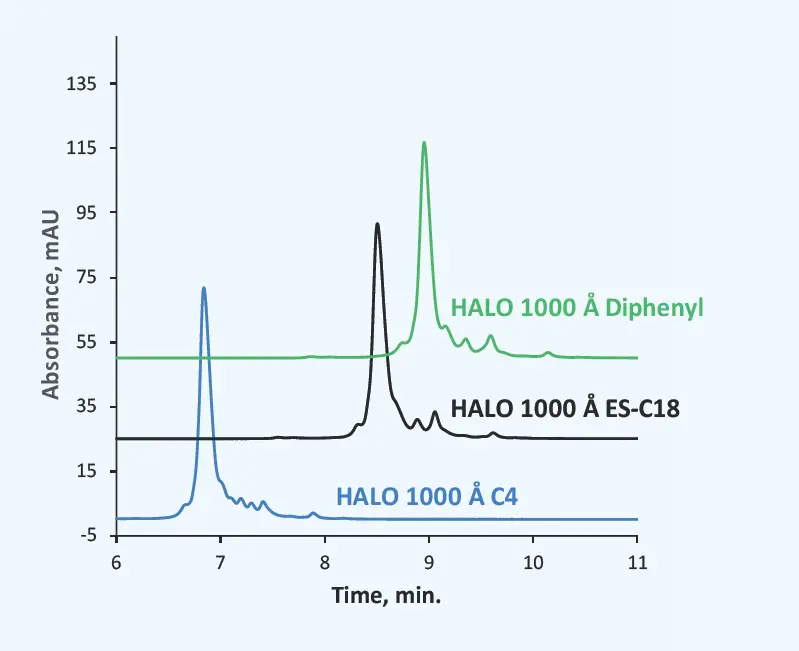
TEST CONDITIONS
HALO 1000 Å diphenyl shows improved resolution, retention and peak area compared to a competitor column of 450 Å SPPs with polyphenyl phase. The increased retention clearly shows the advantage of unhindered large pore access to the bound phase. The HALO diphenyl phase can also be operated at 40 °C without any loss of peak area.
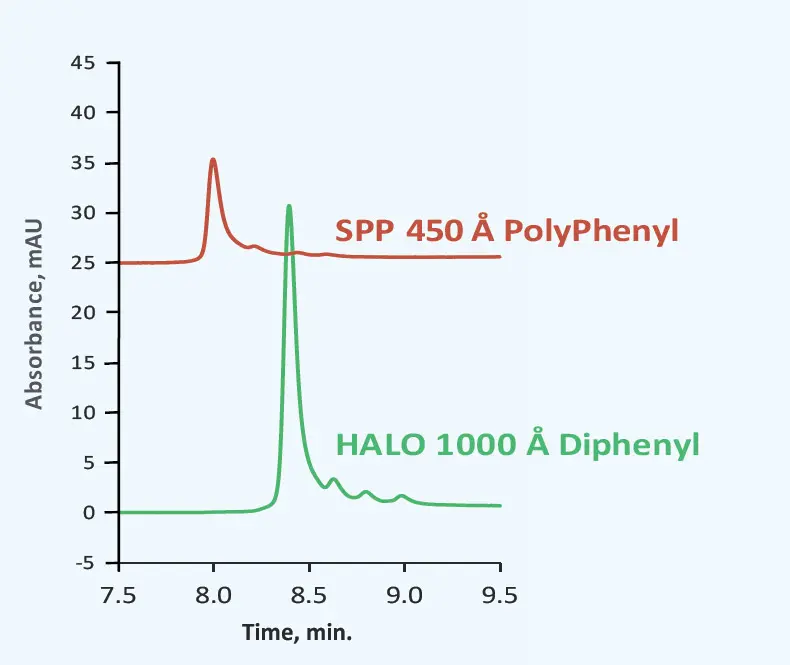
TEST CONDITIONS
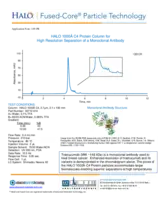 AMT HALO 1000Å C4 Protein Column for High Resolution Separation of a Monoclonal Antibody
AMT HALO 1000Å C4 Protein Column for High Resolution Separation of a Monoclonal Antibody
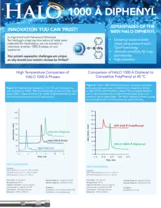 AMT HALO 1000Å Diphenyl Brochure
AMT HALO 1000Å Diphenyl Brochure
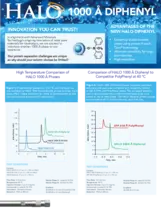 AMT HALO® 1000Å Diphenyl Brochure
AMT HALO® 1000Å Diphenyl Brochure
 AMT HALO® Applications Collection Brochure
AMT HALO® Applications Collection Brochure
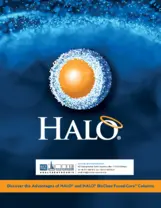 AMT HALO Bioclass Fused-Core Columns Brochure 2018
AMT HALO Bioclass Fused-Core Columns Brochure 2018
 AMT HALO Bioclass Brochure
AMT HALO Bioclass Brochure
 AMT HALO® Catalog
AMT HALO® Catalog
 AMT HALO® Catalog 2023
AMT HALO® Catalog 2023